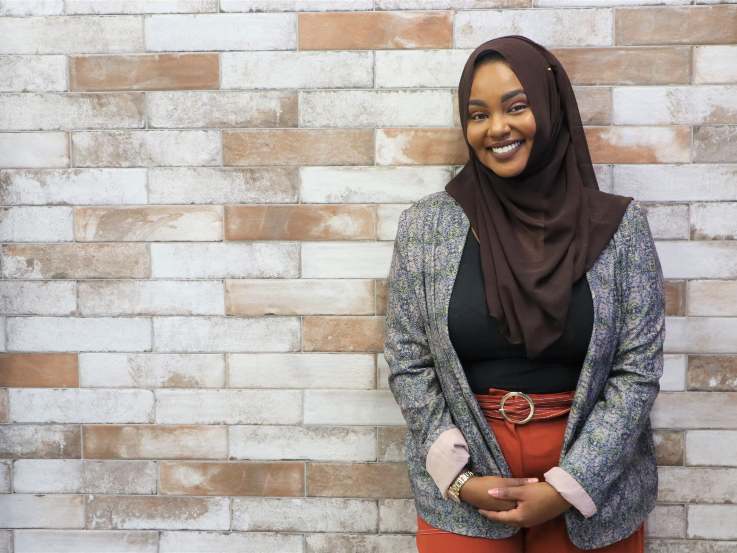Defining social innovation through action and education

Bilqees Mohamed is a fourth-year social work student at Toronto Metropolitan's Faculty of Community Services. She has spent her undergraduate career unpacking the ways social justice and equity allow us to challenge society from the lived experiences of marginalized persons.
In August 2019, Mohamed launched BadGal Media (external link, opens in new window) , a magazine and social innovation hub for women of colour which aims to support and foster the creative voices and work of women of colour in Toronto.
Interview with Bilqees Mohamed
How do you define social innovation (SI)?
I like to think of SI as the bridge between social justice and social change. I think of justice as the values system that underpins a lot of the changes we would like to see, and change being the action itself. In between both of these is social innovation. SI is setting up a framework to get back to an actionable item that is encompassing of your values and everything that you’d like to see in the world.
What sparked your interest in SI?
I struggled with the idea of SI, because I initially believed it to be this business kind of approach to social change, and that business approach does isolate a lot of marginalized folks. I thought, “how could I really develop my interest in SI if I don’t see myself reflected in it?” This ultimately pushed me to look deeper into SI and bridge that gap.
I like to think of SI as the bridge between social justice and social change. I think of justice as the values system that underpins a lot of the changes we would like to see, and change being the action itself. In between both of these is social innovation.
What led you to pursue a minor in SI?
I felt in class like there was a strong focus on the theoretical aspect of social work, and not necessarily how you go from academia to actually working within the systems you are learning about. I thought that studying social innovation could help me do that.
What project are you currently working on in SI?
BadGal Media is one of the projects that I’ve done that is highly reflective of the collaborative and creative nature of SI. My partner in the project, Sahar Khan, and I wondered how we could collectively work together to produce something that challenges both social work and the media, and continues that narrative of intersectional feminism. So we decided to create a magazine for black and Indigenous women of colour, who do not have the outlet to see their identities, experiences, or stories shared.
There is importance in documenting histories as a very tangible thing; setting it in place and time. You can say, “my story is here,” and you can hold it in your hands. And that tangible aspect is so important in that there are so many stories about marginalized folks that have gone undocumented or are not being told by them!
How did you start working with the Office of Social Innovation (OSI)?
I started working with OSI when I applied for the Usha George Students in Action Award through the Faculty of Community Services (FCS), and Melanie supported me by being a reference for that. That funding was put towards producing the first issue of BadGal Media.
From there, I received the opportunity to do an internship at the Gardiner, where I helped to develop programming for the Ai Weiwei Free School. I then went on to apply for the 2019 SocialxChange (opens in new window) , and also did a lot of work with the Social Innovation for Social Justice (SI4SJ) project.
OSI offers projects where you can build a network with people and see how people with different ideas can organically connect and work together.
I’m so grateful for the support and even the approach OSI takes to learn with students and discover the changes that need to be made to support students more. I think that approach to openness from the office is so important, and I think that openness is what will ultimately make OSI stand out at Toronto Metropolitan as an office that is informed by student experiences.
What advice would you give to a student at Toronto Metropolitan looking to take on their own SI project?
I’d say to let your own story and own experiences guide you. I think that’s what SI is, to use the resources that you already have to do work and build networks with your community and look at the people who are already there and giving you support. You already have enough to start, and you already are enough to start.
What’s next for you and your work?
We’re hoping that BadGal issue 2 will be on its way very soon. I also want to take my work in SI and package it as my toolkit for when I graduate.